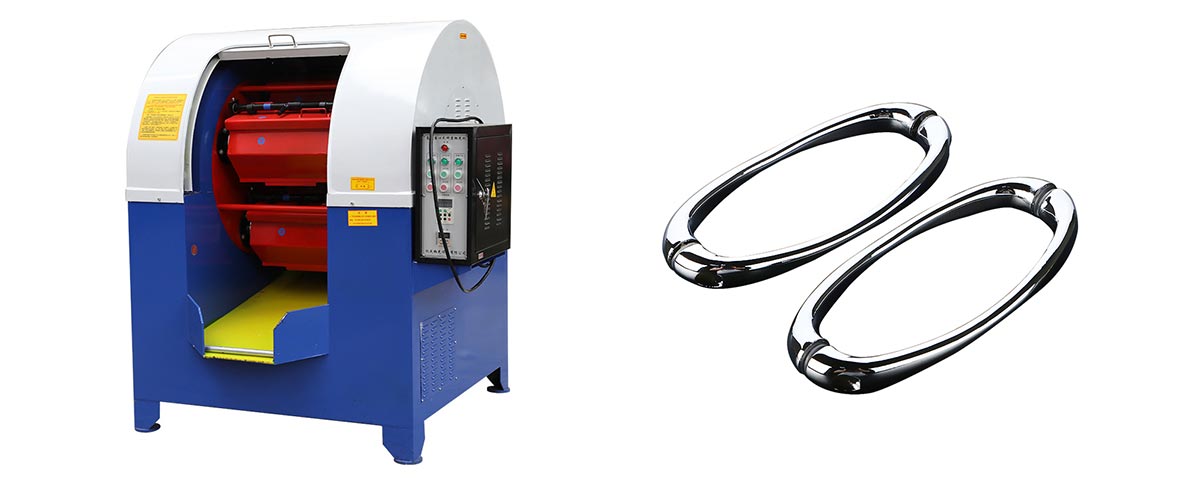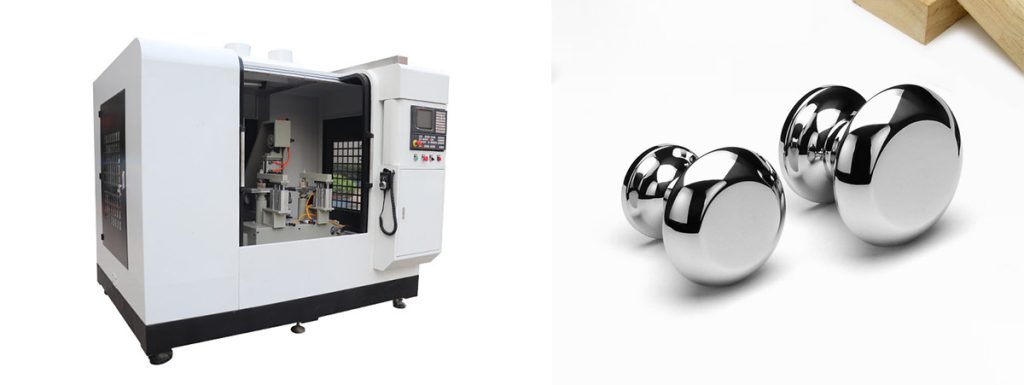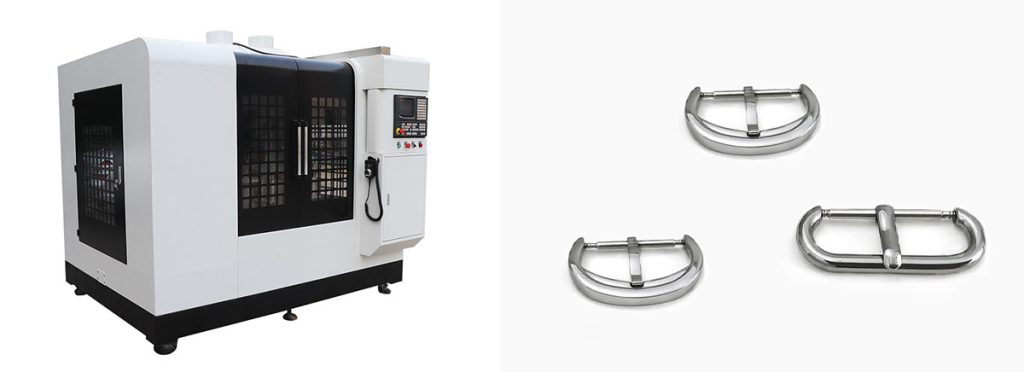

Polishing heat-resistant metals plays a critical role in industries where durability and performance are essential. These metals often resist wear and corrosion, but their unique properties make surface finishing challenging. Advanced polishing techniques ensure smooth surfaces, enhancing functionality and extending material lifespan. Industries such as aerospace, automotive, and marine rely on these methods to meet strict safety and reliability standards. For example, aerospace applications demand fire resistance, while marine environments require corrosion prevention. Using a specialized polishing machine can streamline these processes, delivering precision and efficiency. Each polishing technique addresses specific challenges, ensuring optimal results.
| Industry | Benefit |
|---|---|
| Marine | Corrosion and rust prevention |
| Aerospace | Fire safety and heat resistance |
| Automotive | Equipment reliability |
| Building Construction | Improved fire safety and heat resistance |
Key Takeaways
- Polishing heat-resistant metals makes them stronger and work better.
- Industries like aerospace and automotive rely on this process.
- Techniques like laser and ultrasonic polishing make surfaces smoother.
- These methods also reduce heat damage during the process.
- Chemical and electrolytic polishing work well for tricky shapes.
- They give even finishes without needing much manual work.
- Hybrid polishing mixes methods to get the best results.
- It balances good quality with lower costs for tough metals.
- Automated polishing machines save time and improve accuracy.
- They help keep manufacturing quality steady and reliable.
The Role of Polishing in Heat-Resistant Metals
Definition of Polishing
Polishing refers to the process of creating a smooth and reflective surface by rubbing or applying chemical treatments. This method removes surface imperfections and enhances the material’s appearance. In metalworking, polishing involves repeated abrasion, starting with coarse abrasives and gradually using finer ones. This progression flattens irregularities and minimizes diffuse reflection. The result is a clean, shiny surface with significant specular reflection. Polishing is widely used for metals and glasses due to its effectiveness in improving surface quality.
Importance of Polishing for Heat-Resistant Metals
Polishing plays a vital role in preparing heat-resistant metals for industrial applications. These metals often face extreme conditions, such as high temperatures and corrosive environments. A polished surface reduces the risk of material failure by eliminating micro-cracks and surface defects. This improvement enhances the metal’s durability and performance. For example, polished components in aerospace engines withstand intense heat and pressure more effectively. Additionally, a smooth surface improves the metal’s resistance to oxidation and corrosion, which is crucial in marine and automotive industries. Using a specialized polishing machine ensures precision and consistency, making the process more efficient.
Key Challenges in Polishing Heat-Resistant Metals
Polishing heat-resistant metals presents unique challenges due to their inherent properties. These metals, such as titanium and nickel alloys, are harder and more resistant to wear than standard metals. Their toughness makes them difficult to abrade, requiring polishing techniques. Heat generation during the process can also alter the metal’s properties or cause surface damage. Furthermore, achieving a uniform finish on complex shapes or intricate designs demands high precision. Traditional methods often fall short in addressing these challenges, leading to the development of innovative polishing techniques tailored for heat-resistant materials.
Traditional Polishing Techniques
Mechanical Polishing

Mechanical polishing smooths metal surfaces by cutting or deforming protrusions. Common tools include whetstone sticks, wool wheels, and sandpaper. This method often relies on manual operation, making it a straightforward yet labor-intensive process. For applications requiring high precision, ultra-precision polishing is employed. This polishing technique uses specialized abrasive tools within a polishing liquid to achieve a surface roughness of Ra0.008μm. Such precision is essential for components like optical lens molds. Mechanical polishing is versatile and widely used, but it may struggle with heat-resistant metals due to their hardness. Using a specialized polishing machine can enhance efficiency and consistency in this process.
Chemical Polishing
Chemical polishing involves using chemical solutions to dissolve surface irregularities, creating a smooth finish. This method is particularly effective for polishing complex-shaped workpieces and components. It offers several advantages:
- It is cost-effective and does not require specialized fixtures or a DC power source.
- Multiple parts, such as stainless steel components, can be polished simultaneously.
- The process results in an ultraclean surface finish, enhancing corrosion resistance and mechanical strength.
- It extends the service life of heat-resistant metals by improving localized corrosion resistance.
- The level of surface protection can be controlled based on the chemical composition.
Chemical polishing is an efficient option for industries requiring high-quality finishes on intricate designs.
Electrolytic Polishing
Electrolytic polishing uses an electrochemical process to achieve a smooth and reflective surface. The specimen acts as the anode in an electrical circuit. An electrical current drives an oxidizing reaction, dissolving the metal at the surface where it contacts the electrolyte. The process involves several steps:
- Setting the specimen as the anode.
- Applying an electrical current to initiate the reaction.
- Dissolving surface peaks through controlled voltage and current density.
Unlike chemical polishing, this method eliminates the cathode reaction, improving the leveling of micro peaks and valleys. It is particularly effective for heat-resistant metals, as it avoids the mechanical stress associated with traditional methods. Electrolytic polishing delivers a uniform finish, making it suitable for applications requiring high precision.
Innovative Polishing Techniques
Laser-Assisted Polishing
Laser-assisted polishing represents a cutting-edge approach to refining heat-resistant metals. This method uses high-energy laser beams to melt and re-solidify the surface, creating a smooth and uniform finish. It is particularly effective for components produced through additive manufacturing. Industries such as aerospace and energy rely on this technique to enhance the durability and performance of critical parts like aircraft engines and combustion chambers. The precision of laser-assisted polishing ensures minimal material removal, preserving the integrity of intricate designs. This polishing technique also reduces the need for post-processing, making it a cost-effective solution for high-performance applications.
Ultrasonic Polishing
Ultrasonic polishing employs high-frequency vibrations to refine metal surfaces. A specialized tool transmits ultrasonic waves to an abrasive medium, which gently removes surface irregularities. This method excels in polishing complex geometries and delicate components, where traditional methods may cause damage. Ultrasonic polishing delivers exceptional precision, making it ideal for applications requiring tight tolerances. It also minimizes heat generation, preserving the properties of heat-resistant metals. By integrating ultrasonic polishing with an polishing machine, manufacturers can achieve consistent results while reducing manual effort. This innovation has become a valuable asset in industries demanding high-quality finishes.
Plasma Polishing
Plasma Electrolytic Polishing (PEP) offers a revolutionary way to enhance the surface quality of heat-resistant metals. This process involves submerging components in an electrolyte and applying an electrical current to generate micro-discharges on the surface. These discharges smooth the metal, achieving extremely low roughness values. Plasma polishing significantly improves corrosion resistance, making it indispensable for marine and chemical industries. The technique also ensures uniform finishes on complex shapes, addressing challenges posed by traditional methods. Its eco-friendly nature aligns with the growing demand for sustainable manufacturing practices, further solidifying its role as a modern polishing solution.
Tip: Incorporating automated polishing systems with robotics and AI can further enhance the efficiency of these techniques. These advancements ensure consistent quality and reduce production time.
Hybrid Polishing Techniques
Hybrid polishing techniques combine multiple methods to achieve superior results. These techniques adapt to the specific requirements of the material, balancing quality, efficiency, and cost. For instance, a manufacturer may use a two-step process on critical surfaces while applying a simpler one-step method to less visible areas. This approach ensures a high-quality finish without unnecessary expense.
Hybrid methods are particularly effective for heat-resistant metals, which often require precision and durability. By integrating mechanical, chemical, or ultrasonic processes, hybrid techniques address the unique challenges of these materials. For example, mechanical polishing can remove surface irregularities, while chemical treatments enhance corrosion resistance. Combining these methods ensures a smooth, defect-free surface that meets industrial standards.
Using an polishing machine further enhances the effectiveness of hybrid techniques. These machines streamline the process, ensuring consistent results across complex geometries. Industries such as aerospace and automotive benefit from this adaptability, as hybrid polishing techniques deliver reliable performance under extreme conditions.
Energy Beam Polishing
Energy beam polishing uses focused beams of energy, such as electron or ion beams, to refine metal surfaces. This method removes surface imperfections by melting and re-solidifying the material. The process achieves an ultra-smooth finish with minimal material loss, making it ideal for intricate components.
Heat-resistant metals, such as titanium alloys, benefit significantly from energy beam polishing. The technique enhances surface hardness and reduces the risk of micro-cracks. It also improves the metal’s resistance to oxidation and wear, extending its lifespan in demanding environments.
This polishing technique is highly precise, allowing manufacturers to achieve tight tolerances. It is particularly valuable in industries like aerospace, where components must withstand extreme heat and pressure. By integrating energy beam polishing with automated systems, manufacturers can improve efficiency and reduce production time.
Flame Polishing
Flame polishing uses a high-temperature flame to smooth and refine metal surfaces. The heat softens the material, allowing surface irregularities to flow and even out. This method is commonly used for thermoplastics but has applications in metalworking as well.
For heat-resistant metals, flame polishing offers a quick and efficient way to enhance surface quality. The process is particularly effective for edges and small areas that require a polished finish. However, it requires careful control to avoid overheating, which could alter the metal’s properties.
Flame polishing is often used as a finishing step after other methods, such as mechanical or chemical polishing. It provides a glossy, reflective surface that improves the metal’s appearance and functionality. Industries like construction and automotive use this technique to enhance the aesthetic and performance of heat-resistant components.
Note: Incorporating a polishing machine with flame polishing can improve precision and safety, especially for complex shapes.
Comparative Analysis of Polishing Techniques
Efficiency and Precision

Each polishing technique offers unique advantages in efficiency and precision. Mechanical polishing provides reliable results for simple geometries but struggles with intricate designs. Chemical polishing excels in handling complex shapes, delivering uniform finishes without manual intervention. Electrolytic polishing achieves high precision by eliminating surface irregularities at the microscopic level.
Innovative methods like laser-assisted polishing and ultrasonic polishing enhance precision further. Laser-assisted polishing ensures minimal material removal, preserving intricate details. Ultrasonic polishing refines surfaces with high-frequency vibrations, making it ideal for delicate components. Plasma polishing and energy beam polishing deliver exceptional smoothness, achieving ultra-low roughness values. Using a polishing machine improves consistency across all these methods, especially for industrial-scale applications.
Tip: Automated polishing systems integrated with robotics can significantly boost efficiency while maintaining precision.
Cost and Scalability
Cost and scalability vary widely among polishing techniques. Mechanical polishing remains cost-effective for small-scale operations but becomes labor-intensive for larger projects. Chemical polishing offers scalability by processing multiple components simultaneously, reducing overall costs. Electrolytic polishing requires specialized equipment, increasing initial investment but lowering long-term operational costs.
Innovative techniques like plasma polishing and energy beam polishing involve higher upfront costs due to advanced technology. However, their scalability and efficiency make them suitable for industries requiring high-quality finishes. Hybrid techniques balance cost and performance by combining methods based on specific needs. Incorporating a polishing machine reduces manual effort, making these techniques more scalable for mass production.
Suitability for Heat-Resistant Metals
Heat-resistant metals demand polishing techniques that address their unique properties. Mechanical polishing struggles with these materials due to their hardness. Chemical and electrolytic polishing perform well, enhancing corrosion resistance and durability.
Innovative methods like laser-assisted polishing and plasma polishing excel in refining heat-resistant metals. These techniques minimize heat generation, preserving the material’s properties. Energy beam polishing enhances surface hardness, making it ideal for aerospace and automotive applications. A polishing machine ensures consistent results, even for complex geometries, making it indispensable for processing heat-resistant metals.
Note: Selecting the right technique depends on the material’s properties and the application’s requirements.
Conclusion
Innovative polishing techniques play a pivotal role in enhancing the performance of heat-resistant metals. These methods ensure superior surface preparation, improving adhesion and durability while maintaining environmental sustainability. Recent advancements, such as automated polishing systems and novel abrasive formulations, have revolutionized the industry by delivering higher precision and efficiency. Specialized solutions for complex components, like those used in additive manufacturing, further highlight the importance of innovation in achieving smooth finishes.
| Industry | Benefits |
|---|---|
| Food and Beverage | Ensures hygiene standards by providing smooth surfaces that are easy to sanitize. |
| Aerospace and Automotive | Reduces aerodynamic drag, improves fuel efficiency, and enhances durability for safety. |
| Pharmaceutical and Healthcare | Enhances appearance and performance of surgical instruments, making them easier to clean. |
| Industrial Machinery | Reduces friction and wear, extending component life and improving efficiency. |
| Decorative Applications | Provides visual appeal for architecture and consumer goods, enhancing design quality. |
Future trends, such as robotics-driven polishing machines and green technologies, promise even greater efficiency and sustainability. By adopting these advanced techniques, industries can achieve consistent quality, reduce production time, and meet the demands of modern manufacturing. Investing in innovation ensures long-term success and positions businesses at the forefront of technological progress.
Tip: Explore automated polishing machines to streamline processes and achieve unparalleled precision in industrial applications.
